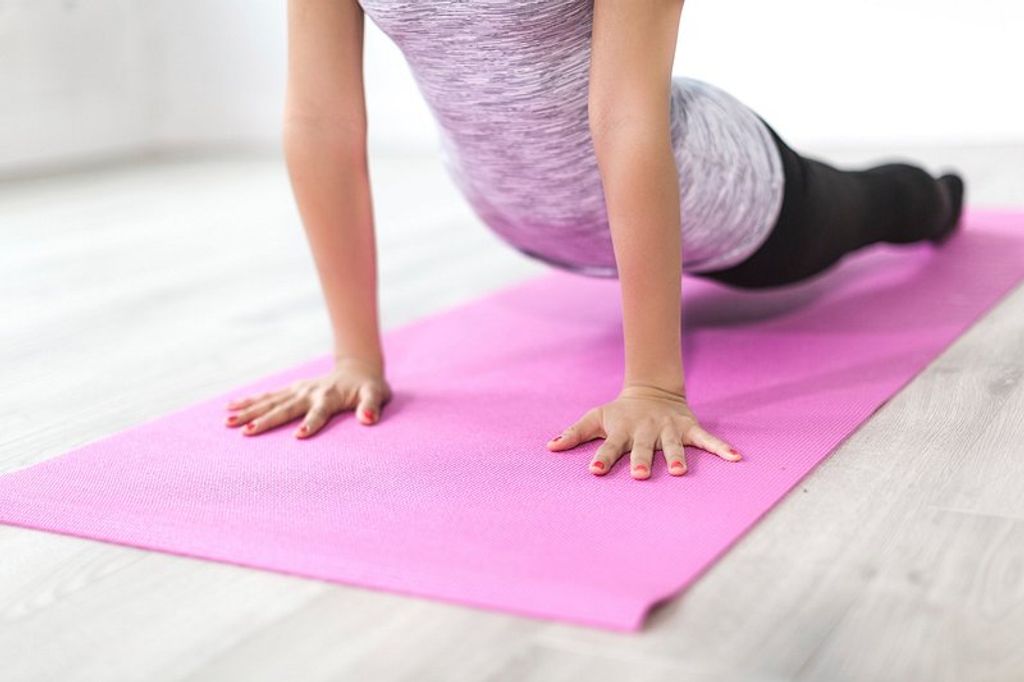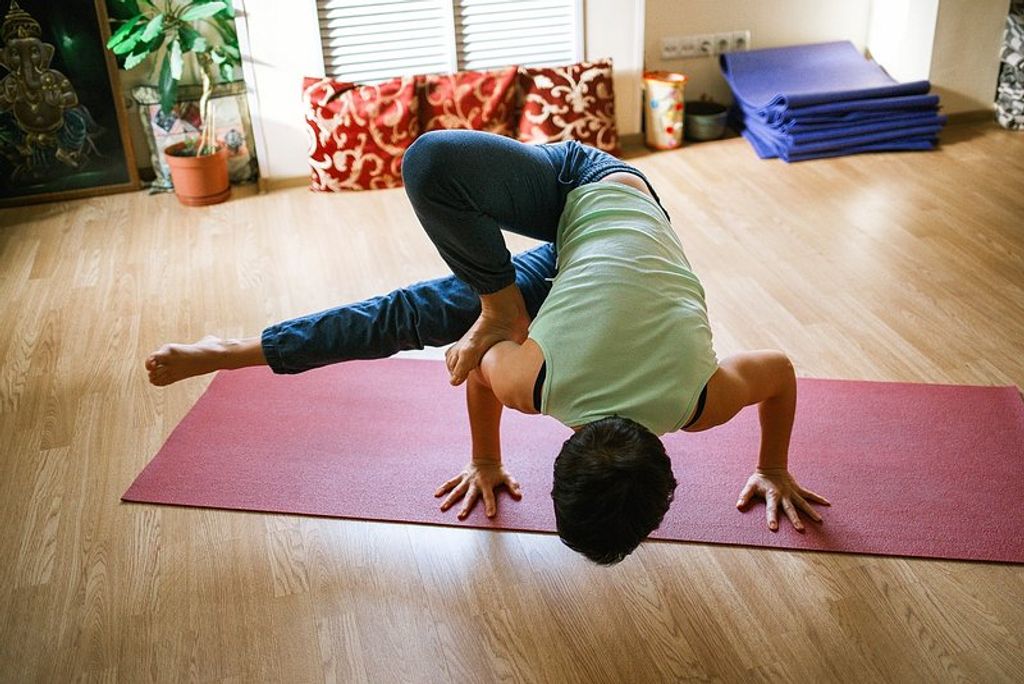
Step-by-Step Guide: How to Wash a Yoga Mat Properly
Maintaining a clean yoga mat is essential for a hygienic and enjoyable practice. Regularly washing your mat helps prevent the buildup of bacteria and germs, extends its lifespan, and improves your overall yoga experience. In this step-by-step guide, we will walk you through the process of properly washing your yoga mat to keep it fresh and clean.
Key Takeaways
- Regularly washing your yoga mat prevents the buildup of bacteria and germs.
- Properly cleaning your mat helps maintain its longevity.
- Washing your mat improves your overall yoga practice.
- Use mild soap or yoga mat cleaner, a soft cloth or sponge, water, and a towel for washing your mat.
- Ensure the cleaning solution is well-mixed and rinse the mat thoroughly before drying.
Why is it important to wash your yoga mat?
Prevent the buildup of bacteria and germs
Regularly cleaning your yoga mat is essential to prevent the buildup of bacteria and germs. Sweat, dirt, and oils from your body can accumulate on the mat's surface over time, creating an environment for bacteria to grow. This can lead to unpleasant odors and potential health risks. To ensure a clean and hygienic practice, it is recommended to clean your mat after every use or at least once a week, depending on your frequency of practice.
Maintain the longevity of your mat
Proper maintenance is essential to ensure the longevity of your yoga mat. By following these simple steps, you can keep your mat in excellent condition for years to come.
Improve your practice
Improving your yoga practice requires dedication and consistency. By regularly washing your yoga mat, you can create a clean and hygienic surface for your practice. A clean mat not only prevents the buildup of bacteria and germs but also enhances your overall experience. When your mat is clean, you can focus better on your poses and movements, allowing for a more mindful and effective practice.
Materials needed for washing your yoga mat
Mild soap or yoga mat cleaner
When it comes to cleaning your yoga mat, using a mild soap or yoga mat cleaner is essential. These gentle cleaning solutions are designed to effectively remove dirt, sweat, and bacteria from your mat without causing any damage. It is important to choose a soap or cleaner that is specifically formulated for yoga mats to ensure that it does not leave any residue or affect the grip of the mat. Mild dish soap is a popular choice for cleaning yoga mats as it is gentle yet effective. Alternatively, you can also use a specialized yoga mat cleaner that is available in the market. Whichever option you choose, make sure to follow the instructions provided by the manufacturer.
Soft cloth or sponge
When it comes to cleaning your yoga mat, using a soft cloth or sponge is essential. These gentle tools are perfect for wiping down the surface of the mat and removing any dirt or grime. Make sure to dampen the cloth or sponge with the cleaning solution before gently wiping the entire mat. Pay extra attention to heavily soiled areas to ensure a thorough cleaning.
Water
After preparing the cleaning solution, it's time to move on to the next step: wiping down the mat. Dampen a soft cloth or sponge with the cleaning solution and gently wipe the entire surface of the mat. Make sure to pay extra attention to heavily soiled areas. This will help remove dirt, sweat, and any other residue that may have accumulated on the mat.
Towel
After wiping down the mat, it's important to dry it properly. Lay the mat flat on a towel to absorb any excess water. Roll up the mat and gently press to remove any remaining moisture. Finally, hang the mat to air dry completely.
Step 1: Prepare the cleaning solution
Mix mild soap or yoga mat cleaner with water
To create a cleaning solution for your yoga mat, mix mild soap or yoga mat cleaner with water. The ratio of soap or cleaner to water will depend on the specific product you are using, so be sure to follow the instructions on the packaging. It's important to use a mild soap or cleaner that is specifically designed for yoga mats to avoid damaging the material. Gently stir the mixture until it is well-mixed and there are no clumps of soap or cleaner.
Ensure the solution is well-mixed
To ensure the cleaning solution is effective, it is important to mix the mild soap or yoga mat cleaner with water thoroughly. This will ensure that the solution is evenly distributed and ready to remove dirt and grime from your yoga mat.
Step 2: Wipe down the mat
Dampen the soft cloth or sponge with the cleaning solution
To clean your yoga mat effectively, dampen a soft cloth or sponge with the cleaning solution. Make sure the cloth or sponge is not dripping wet, but just moist enough to clean the mat. This will help remove any dirt, sweat, or bacteria that may have accumulated on the surface of the mat. Gently wipe the entire surface of the mat, paying extra attention to heavily soiled areas. By using a damp cloth or sponge, you can ensure a thorough and effective cleaning process.
Gently wipe the entire surface of the mat
After preparing the cleaning solution, it's time to gently wipe the entire surface of the mat. Using a soft cloth or sponge dampened with the cleaning solution, start from one end of the mat and work your way to the other end. Make sure to apply gentle pressure and use circular motions to effectively clean the mat. Pay extra attention to heavily soiled areas, such as sweat stains or dirt buildup. By thoroughly wiping the mat, you'll remove any dirt, sweat, or bacteria that may have accumulated during your yoga practice.
Pay extra attention to heavily soiled areas
When wiping down your yoga mat, it is important to pay extra attention to heavily soiled areas. These areas may have accumulated dirt, sweat, or other debris that can harbor bacteria and affect the cleanliness of your mat. To effectively clean these areas, apply slightly more pressure and spend a bit more time wiping them. Use gentle circular motions to lift away any stubborn dirt or stains. Remember to rinse your cloth or sponge frequently to avoid spreading dirt from one area to another.
If you notice any particularly stubborn stains or odors, you may consider spot cleaning the area with a mixture of mild soap and water. Gently scrub the affected area using a soft brush or cloth, then rinse thoroughly. Avoid using harsh chemicals or abrasive materials, as they can damage the surface of your mat.
Regularly cleaning heavily soiled areas will help maintain the hygiene of your yoga mat and ensure a clean practice every time.
Step 3: Rinse the mat
Use a clean cloth or sponge dampened with water
After preparing the cleaning solution, it's time to wipe down your yoga mat. Take a clean cloth or sponge and dampen it with water. Make sure the cloth or sponge is not soaking wet, but just damp enough to effectively clean the mat.
Gently wipe the entire surface of the mat using the damp cloth or sponge. Start from one end and work your way to the other, applying light pressure. This will help remove any dirt, sweat, or residue that has accumulated on the mat.
Pay extra attention to heavily soiled areas, such as the parts where your hands and feet usually rest. Give these areas a little more scrubbing to ensure they are thoroughly cleaned.
Remember to rinse the cloth or sponge with water regularly to remove any dirt or debris that may have accumulated on it. This will prevent any dirt from being transferred back onto the mat.
Wipe away any soap residue
After wiping down the mat with the cleaning solution, it is important to thoroughly rinse away any soap residue. Soap residue can make the mat slippery and affect your grip during your yoga practice. Use a clean cloth or sponge dampened with water to wipe away any remaining soap. Make sure to go over the entire surface of the mat to ensure all residue is removed. Once the soap residue is gone, your mat will be clean and ready for use.
Ensure the mat is thoroughly rinsed
After wiping away any soap residue, it is important to ensure that the mat is thoroughly rinsed. This will help remove any remaining cleaning solution and prevent any potential skin irritation. Use a clean cloth or sponge dampened with water to wipe down the mat. Make sure to go over the entire surface of the mat, paying extra attention to heavily soiled areas. Rinse the cloth or sponge frequently to ensure a thorough rinse. Once you have finished rinsing, check the mat to ensure that there are no soap bubbles or residue left behind.
Step 4: Dry the mat
Lay the mat flat on a towel
After wiping down the mat, lay it flat on a towel to begin the drying process. This helps to absorb any remaining moisture and allows the mat to dry evenly. Avoid hanging the mat to dry as it may cause the mat to stretch or warp. Press gently on the mat while rolling it up to remove excess water. Once rolled, hang the mat in a well-ventilated area to air dry completely. This ensures that the mat is thoroughly dried and ready for your next yoga session.
Roll up the mat and press gently to remove excess water
After rolling up the mat and pressing gently to remove excess water, it is important to properly dry the mat to prevent the growth of mold and mildew. Lay the mat flat on a towel to absorb any remaining moisture. This will help to speed up the drying process and ensure that the mat is completely dry before storing it. Avoid hanging the mat to dry as this can cause it to stretch and lose its shape. Once the mat is dry, it is ready to be used again for your next yoga session.
Hang the mat to air dry completely
After rinsing the mat, it is important to hang it up to air dry completely. This ensures that any remaining moisture evaporates and prevents the growth of mold or mildew. Find a well-ventilated area where you can hang the mat, such as a clothesline or a shower rod. Make sure the mat is evenly spread out to allow for proper airflow. Avoid exposing the mat to direct sunlight for extended periods as it may cause fading or damage to the material.
Additional tips for maintaining your yoga mat
Clean your mat regularly
Regular cleaning of your yoga mat is essential to maintain its hygiene and extend its lifespan. By removing dirt, sweat, and bacteria, you can ensure a clean and safe practice. Here are some tips to help you clean your mat effectively:
Avoid using harsh chemicals
When washing your yoga mat, it is important to avoid using harsh chemicals. These chemicals can damage the material of your mat and affect its performance. Instead, opt for mild soap or a yoga mat cleaner that is specifically designed for cleaning yoga mats. These gentle cleaning solutions will effectively remove dirt and sweat without causing any harm. Additionally, using natural cleaning products can be a safer and more eco-friendly option.
Store your mat properly
Properly storing your yoga mat is crucial for maintaining its quality and longevity. Here are some tips to help you store your mat correctly:
- Roll up your mat tightly to prevent creases and maintain its shape.
- Utilize yoga mat straps or mat bags to keep your mat secure and protected.
- Avoid storing your mat in direct sunlight or extreme temperatures, as this can cause damage.
- Find a clean and dry area to store your mat, away from any moisture or humidity.
- Regularly clean your mat before storing it to prevent the buildup of dirt and bacteria.
Remember, taking care of your yoga mat will ensure that it lasts for a long time and remains in good condition.
Consider using a mat towel
Using a mat towel during your yoga practice can provide several benefits. It helps absorb sweat and prevents it from seeping into your mat, keeping it clean and hygienic. The towel also provides an extra layer of cushioning, making your practice more comfortable. Additionally, a mat towel with a gripped underside can help prevent slipping, ensuring stability and safety during your poses. It's important to choose a mat towel made of absorbent fabric that is easy to clean and maintain. Consider investing in a high-quality mat towel to enhance your yoga experience.
Maintaining your yoga mat is essential for a clean and hygienic practice. Here are some additional tips to keep your yoga mat in top condition. First, make sure to clean your mat regularly with a gentle cleanser and water. Avoid using harsh chemicals that can damage the material. Second, allow your mat to air dry completely before rolling it up. This will prevent moisture buildup and the growth of bacteria. Third, store your mat in a cool and dry place to avoid mold and mildew. Lastly, consider using a yoga towel or mat spray to enhance grip and maintain freshness. Visit Yune Yoga for a wide range of high-quality yoga mats and fitness accessories. Elevate your practice with our non-slip and eco-friendly mats, designed with beauty and functionality in mind. Explore our collection of yoga towels and straps to enhance your yoga and exercise routine. Take your yoga journey to the next level with Yune Yoga!
Conclusion
In conclusion, properly washing your yoga mat is essential for maintaining its cleanliness and longevity. By following this step-by-step guide, you can ensure that your yoga mat remains free from dirt, bacteria, and odor. Remember to regularly clean your mat to prevent the buildup of sweat and germs. Additionally, using a mild detergent and gentle scrubbing techniques will help preserve the integrity of the mat. With proper care, your yoga mat will continue to provide you with a clean and hygienic surface for your practice. Namaste!
Frequently Asked Questions
How often should I wash my yoga mat?
It is recommended to wash your yoga mat at least once every few weeks, depending on how frequently you use it. If you practice yoga daily or engage in activities that cause excessive sweating, you may need to wash it more often.
Can I use regular soap to clean my yoga mat?
While regular soap can be used to clean your yoga mat, it is best to use a mild soap or a yoga mat cleaner specifically designed for cleaning yoga mats. Harsh chemicals or strong detergents may damage the material of the mat.
Can I machine wash my yoga mat?
Most yoga mats are not suitable for machine washing as it can cause damage. It is recommended to hand wash your yoga mat to ensure its longevity. Refer to the manufacturer's instructions for specific cleaning guidelines.
How do I remove stubborn stains from my yoga mat?
For stubborn stains, you can create a paste using baking soda and water. Apply the paste to the stained area and gently scrub with a soft cloth or sponge. Rinse thoroughly and allow the mat to air dry.
Can I use a yoga mat cleaner spray instead of soap and water?
Yes, you can use a yoga mat cleaner spray as an alternative to soap and water. These sprays are specifically formulated to clean and sanitize yoga mats. Follow the instructions on the spray bottle for best results.
How should I store my yoga mat?
It is best to store your yoga mat in a cool, dry place away from direct sunlight. Rolling up the mat with the top side facing outwards helps to prevent the edges from curling. Avoid folding or creasing the mat, as it can cause permanent damage.


